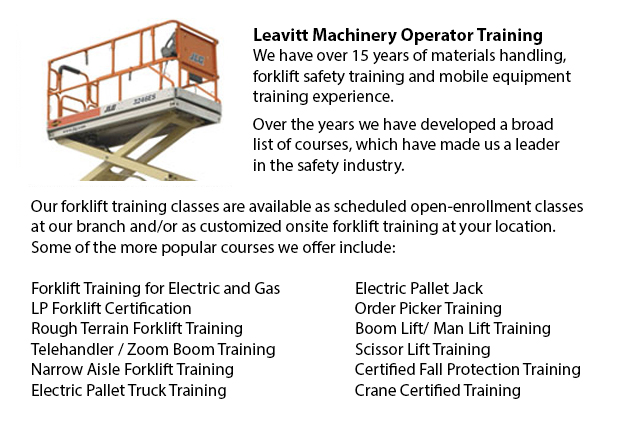
Kitchener Scissor Lift License - The is an inherent risk in operating a scissor lift, since with all types and kinds of powered work tools will need correct handling to prevent accidents that may result in damage or injuries. Companies need to ensure that workers using this equipment have the required experience.
Untrained employees should not be permitted by their companies to use scissor lifts. The lift is made to raise people and materials to various heights. Failure to know and fully abide by safety standard can lead to injuries for the users or damage to the lift.
There are no regulations governing the utilization of fall protection for scissor-lift users. However, manufacturers may suggest the utilization of fall protection and in various circumstances tying off in scissor lifts might be required by employer rules, job-specific risk assessments or local rules.
Prior to using the equipment, the scissor-lift operator should perform a thorough check to ensure the equipment is in good working order. This is the operator's responsibility, even though the unit has already been in service that same day. The machine's operator's manual contains a pre-operation checklist.
Examples of what to look for when performing a pre-operation check consist of checking tire-inflation pressure, and checking controls in the platform and ground controls to be able to ensure they are working. When retracting or extending the boom, look for delayed movement on the fly section that could indicate loose cables. Whilst operating the controls, make sure that the emergency stop switches work. Operate functions against the machine's cutout switches. Check the boom control system by cycling a boom lift to the furthest extent of its operating envelope. Safety limiters should stop the unit automatically before it moves into an unstable position, if they are working properly. If they aren't, shut down the lift and ensure that it is repaired before utilizing it again.
Safe operating measures must be followed always, with the levers being operated with even, controlled pressure. A control lever must never be pushed from one position to the opposite position. The lever must be shifted to neutral, prior to stopping, and then proceeding in the desired direction. When released, control switches and levers should return to the neutral position automatically. Depress the foot switch prior to operating platform controls.
-
Kitchener Forklift Training Schools
Kitchener Forklift Training Schools - The Advantages Of Taking One Of Our Forklift Training Schools Are you searching for work as a driver of a forklift? Our regulatory-compliant mobile equipment operator training offers instruction in types of fo... More -
Kitchener Overhead Crane Operator Training
Kitchener Overhead Crane Operator Training - Our overhead crane operator training course is designed to teach employees the basics of overhead crane/sling operation and pre-shift checks. Courses are taught by our expert trainers and consultants. Well... More -
Kitchener Crane Training School
Kitchener Crane Training School - The crane training school offers industry-relevant programs. Courses provide trainees with learning outcomes which match present industry demands. Our small class sizes combine hands-on experience and theory. Our qua... More -
Kitchener Skid Steer Ticket
Kitchener Skid Steer Ticket - The lift arms on the skid-steer loader are located at the side of the driver along with pivots behind the driver's shoulders. These features makes the skid-steer loader different as opposed to the conventional front load... More -
Kitchener Manlift Operator Certification
Kitchener Manlift Operator Certification - Our scissor platform and aerial lift training and certification empowers participants with a knowledge and general understanding of the efficient and safe use of "Power Operated Mobile Work Platforms," under... More -
Kitchener Crane Safety Training
Kitchener Crane Safety Training - Companies and crane operators have to be aware of the problems related to crane safety. Legislation provides rules for the safe operation, inspection and maintenance of lifting machines all around North America. Cran... More -
Kitchener Forklift Training Programs
Kitchener Forklift Training Programs - Are you searching for work as a forklift driver? Our regulatory-compliant mobile equipment operator training offers instruction in kinds of forklifts, pre-shift check, fuel kinds and dealing with fuels, and safe... More -
Telehandler Training in Kitchener
Telescopic handlers often known as telehandlers for short, are an extremely popular piece of heavy construction machinery. They are commonly used in the construction and agricultural industries. These equipments have extreme reaching ability and can... More

Forklift Certification Kitchener
TOLL FREE: 1-888-254-6157
Kitchener, Ontario
forkliftcertificationkitchener.com
Email Us
About Us


